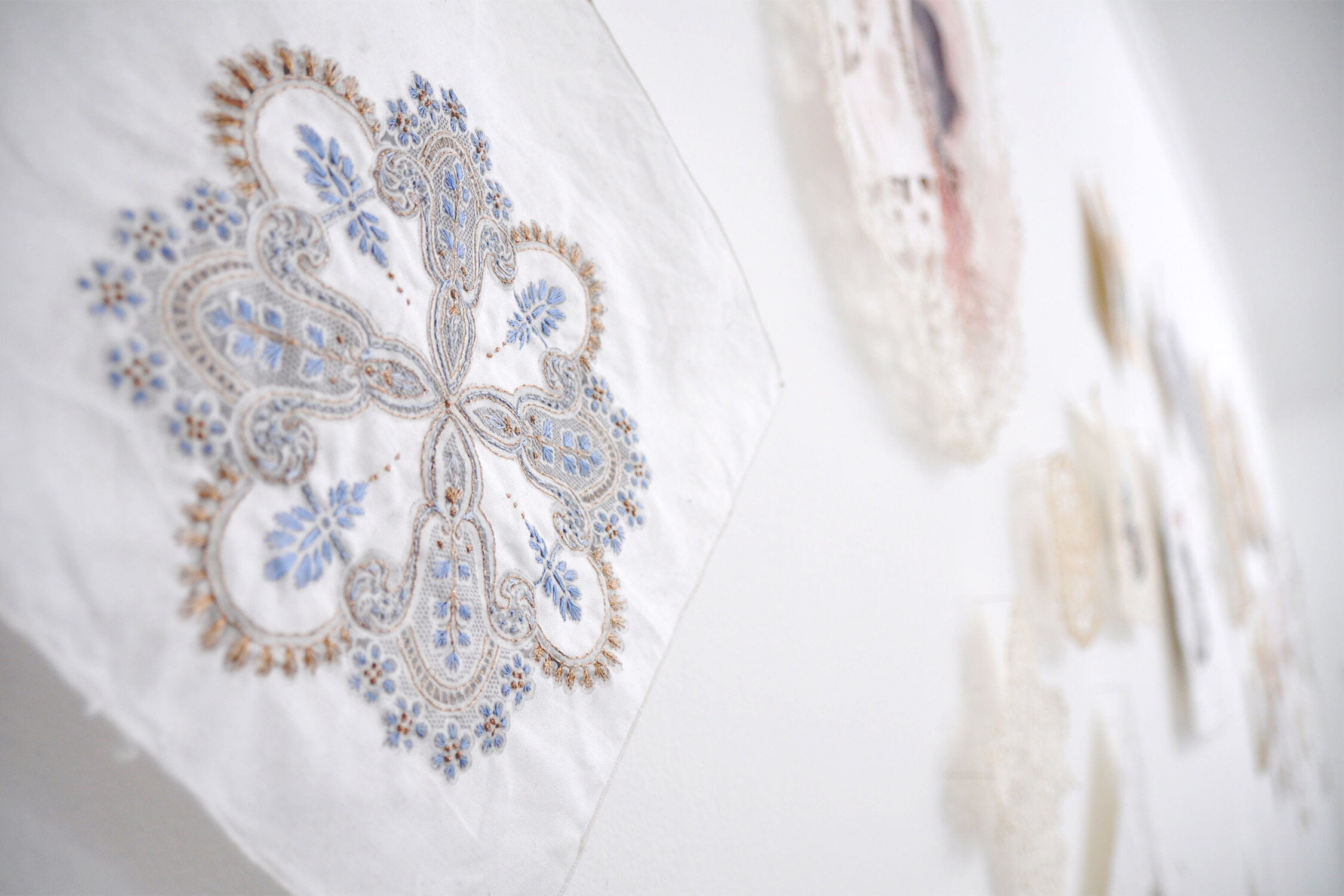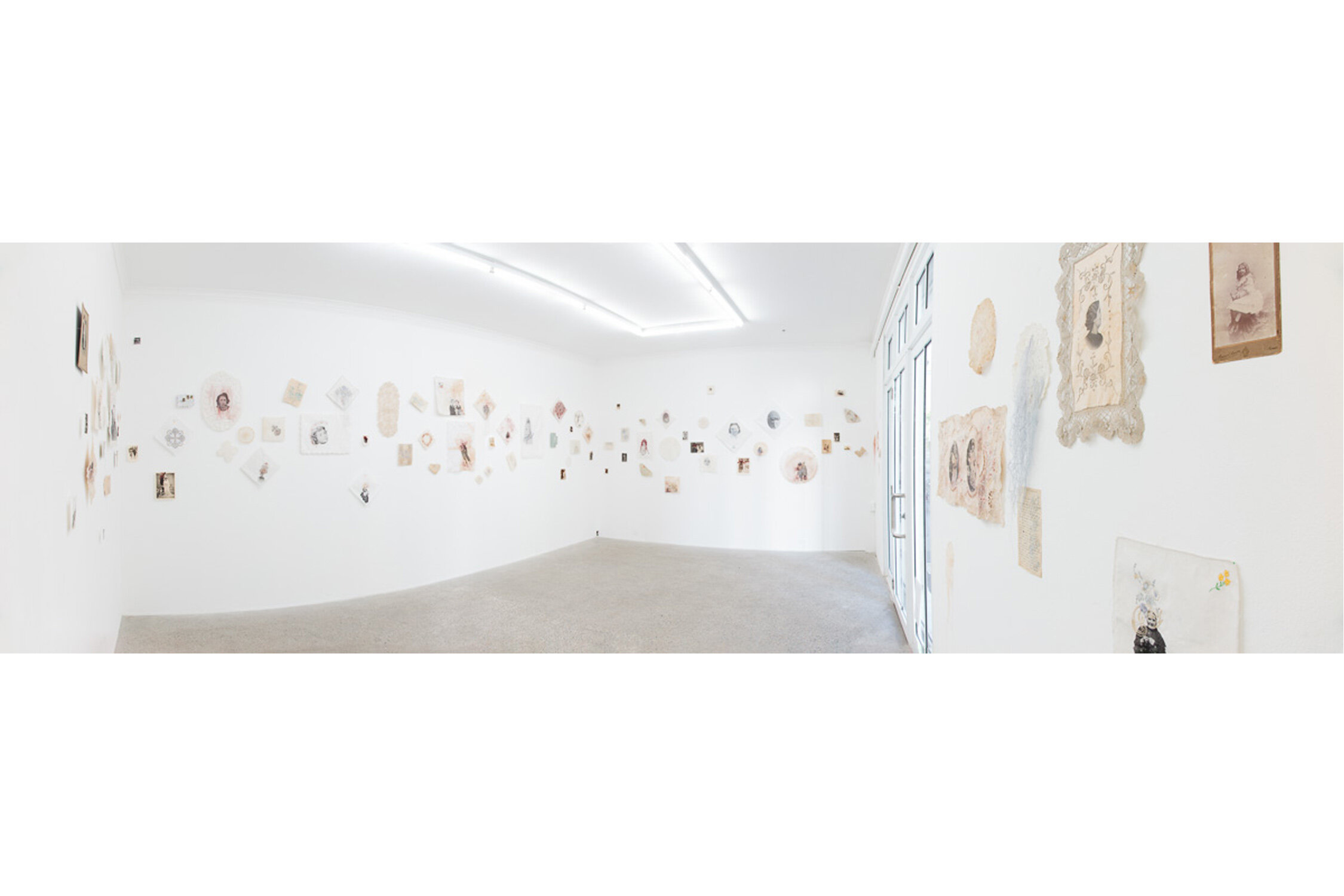Diaspora
Mop Projects, Sydney, Australia 2016
Diaspora began during a residency at the Cité Internationale des Arts in Paris. Hume was drawn to the flea markets, holding items gathered from deceased estates. In a city like Paris, the weight of history can be felt in every stone. However, it was not the narratives of ‘great masters’ in the hallowed museums that piqued the interest of the artist. Rather, it was the piles of photographs, letters, envelopes, old clothes, diaries, passports and birth certificates of individuals long passed. Sorting through these piles of objects, Hume began seeking out images of women in their daily lives. She was also attracted to samples of lace and textiles which allude to women’s labour, particularly the way such work has frequently been relegated to a lower status in the divisions between ‘craft’ and ‘art’. Upon returning to Australia, Hume recruited forty volunteers to assist her with creating the works in Diaspora. Lace patterns from the Library of Decorative Arts in Paris are embroidered onto found fabrics, which are printed with anonymous images from the Paris markets. These materials are selected and composed by Hume, yet completed through the work of her volunteers.
Hume admits that she possesses little training as an embroiderer, and some of her volunteers have even less. However, this amateurism adds an intriguing rawness and individuality to the way the embroidery patterns have been interpreted. In a number of cases, the artist has inverted the pieces, displaying the backs of the embroidery, rather than the more precisely realised fronts. These tangled messes have their own bodily allusions, like tresses of hair trailing from the back of the found fabric pieces. Each piece is laced with personal history, and it is a powerful tribute to the untold stories and anonymous lives of the women behind the pieces and images. Through these works, strains and aches are shared across time, and the echoes of many people, of many bodies, are drawn together, stitch-by-stitch.
Diaspora exhibition statement by Nadia Odlum
Photography by Docqment












